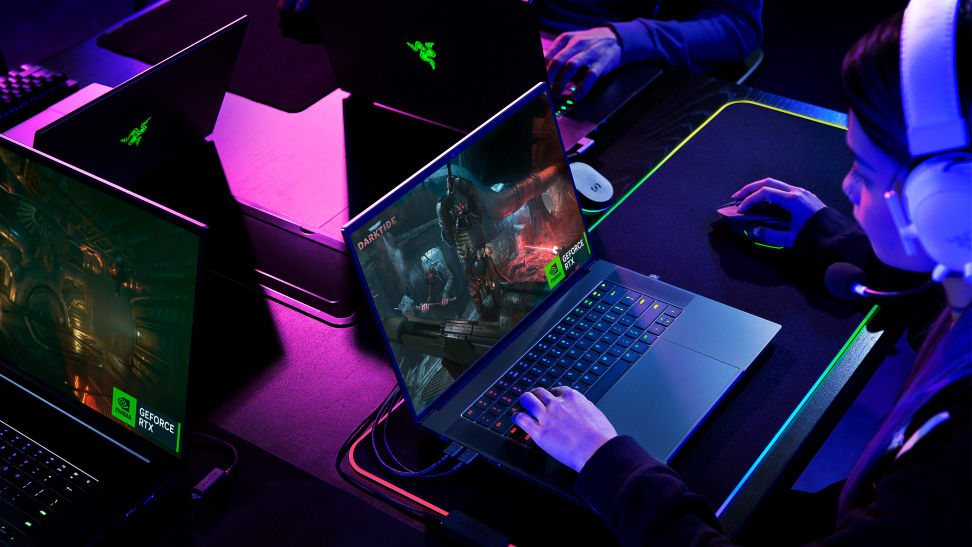Razer unveils a resolution-swapping Blade 16 laptop at CES 2023
Change resolutions on the fly.
 Credit:
Razer
Credit:
Razer
Products are chosen independently by our editors. Purchases made through our links may earn us a commission.
With CES 2023 in full swing, PC gaming juggernaut Razer has announced a suite of new products, from its mobile streaming handheld, the Razer Edge, to new models of its Razer Blade 16 and 18 laptops. Both models feature larger 16:10 displays in the same footprint as last year’s laptops, but the Blade 16 is the one to keep an eye on thanks to its unique ability to switch between 120hz, 3840 x 2400 (UHD+) and 240Hz, 1920 x 1200 (FHD+) resolutions.
The UHD+ Creator mode is perfect for creators who want to edit photos and videos on the go thanks to a 283 pixels-per-inch density and outstanding color accuracy—Razer promises 100% coverage of the DCI-P3 color space. This mode should also be great for slower-paced RPGs and strategy games. Toggling to Gamer mode downgrades the resolution to FHD+ but doubles the speed, which is a boon for esports players on the go.
Razer hasn’t revealed the full price range yet, but the 2023 Razer Blade 16 will start at $2,700 for the base model, which will come equipped with a mobile Intel Core i9-13950HX processor, mobile Nvidia RTX 4060 GPU, 16GB of DDR5 RAM clocked at 5600MHz, and a 16:10, 2560 x 1600 (QHD+) display that tops out at 240Hz. The panel will be IPS and hit a maximum of 500 nits (and won’t be able to display HDR content).
If you want that coveted dual display capability, you’ll need to bump up to the model with a mobile Nvidia RTX 4070 GPU and 32GB of 5600MHz DDR5 RAM (all Blade 16 models will use the same Core i9-13950HX CPU). Interestingly, the dual-mode RTX 4070 model will use a mini-LED display that tops out at 600 nits in SDR and 1,000 nits with HDR turned on.
But if you move one step up, the RTX 4080-equipped version is stuck with the same QHD+ IPS panel as the lesser models. The only other model to use the dual-mode mini-LED screen is the top-of-the-line version equipped with a mobile RTX 4090. You’ll need a lot of GPU to push those resolutions at full speed.
All of the forthcoming Blade 16 models will come equipped with a 95.2Whr battery, Wi-Fi 6E, and two user-upgradeable PCIe Gen 4 storage slots. They’ll all also be the same size and weight, with a CNC-milled aluminum chassis that measures 13.98 inches deep, 9.61 inches wide, and 0.87 inches thick and weighs 5.4 pounds. That isn’t ultrabook territory by any means, but it also isn’t backbreaking for a desktop replacement.
The new Razer Blade 16 is slated to go on sale in the first quarter of this year.


